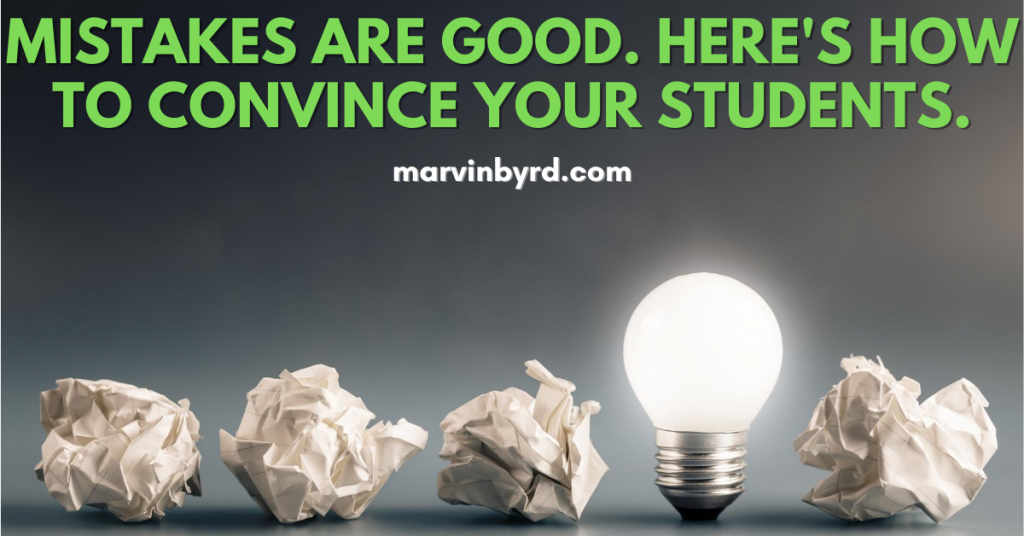One of the greatest challenges for any teacher is convincing students that mistakes are good. Many students live with the fear of getting it wrong, especially getting it wrong in front of their peers. As much as we try to make kids comfortable and encourage them, the feeling can have an overwhelming effect on students. I also dealt with this anxiety growing up. When people tried to convince me that mistakes are good, it was hard for me to believe them because the defense system in my body was telling me different. It was telling me to flee and avoid that scenario. Encouraging students that mistakes are good may not happen overnight. Some students will need more encouragement than others. Here are 3 tips to help convince students that mistakes are good:
1. Focus the student’s attention on the non-graded tasks
Success at anything requires faithfulness and attention to the little things. The little things are considered little things because they seemingly don’t matter or they are not attractive. However, Benjamin Franklin reminds us that “small leaks sink big ships.” For students, there are “small” tasks that don’t get graded, but they do have an effect on the outcome. It could be things like, asking questions in class, taking great notes, paying attention in class, or showing up on time and prepared. These things do matter and it’s hard for a student to make the argument that they are doing all they can do if they aren’t mastering these things. By helping build the student up and getting them on a winning streak at mastering these things, their confidence starts to grow. Confidence is key when it comes to convincing students to be OK with making mistakes.
2. Feedback is a gift
We simply can’t improve if we don’t get feedback. Mistakes are good when feedback immediately follows. As a result, feedback is a gift. It should be treated like one too. You will have to model what that looks like for your students. You can share with students examples from your personal life or you can show them what it looks like in in real-time. Real-time examples are most ideal. Ask the students to give you feedback about the class. When you get the feedback, express gratitude and that you will study it and determine what changes need to be made.
When you start to implement some of the changes, acknowledge to the class that you are trying something new based on feedback you received. When students see that you are willing to be vulnerable and learn from feedback, you send an important message about what it means to be human. You have to learn from your attempts to get better. If you don’t try, it’s hard to improve
3. Constructive language adopted by everyone
As the architect of your environment, you have the responsibility of making your classroom a safe space to be human. as humans, we make mistakes. But throughout our history, there have been many successful people who learned from their mistakes and improved. Creating an environment that promotes even learning through mistakes can help students become more comfortable with the idea that they don’t have to be perfect. You can start by adopting phrases such as “mistakes are good” or “I’m not there yet.” There are a number of scenarios that come up in a class in which the response can have an exponential effect. Make sure you have equipped students with power phrases that you expect to hear from them when the situation arises.
How do you convince students that mistakes are a part of the process? Please share in the comments section.
MB
Enjoying the content? Please consider partnering with us to spread the message with a donation via PayPal.
Share via:

